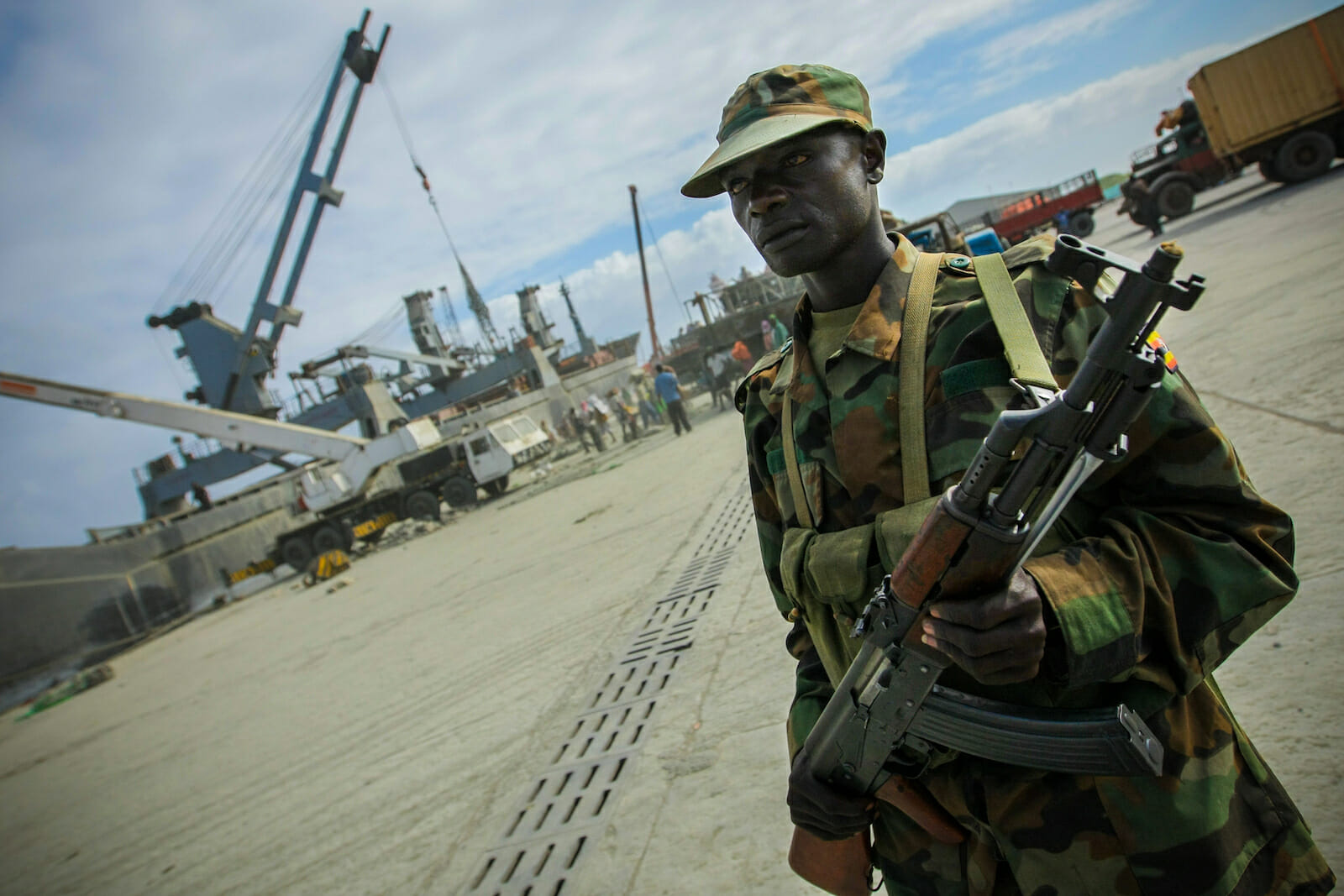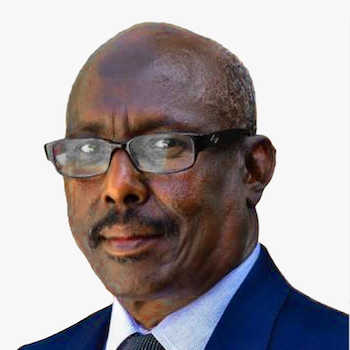
A Proposed Model for Somalia: The Case of Ken Menkhaus
After the Provisional Constitution establishing a model of governance in Somalia was approved, Ken Menkhaus, a Somalia expert at Davidson College, published an article titled, “Somalia’s 20-year Experiment in Hybrid Governance.”
The article offers justification for the adoption of what the author termed, the ‘Mediated State’ model of governance in which the central government outsources its core functions to the private sector, nonprofit organizations and local polities. This model of governance embedded in the PC assumes the existence of legitimate and accountable local political authorities either interested in or obliged to cooperate with the national leaders and institutions. Thus, the leaders of the central government without responsibilities and competencies must gain legitimacy, functions, and authority from those local authorities.
Menkhaus who has been musing on Somalia’s dystopian future for the past 20 years dispels the perception that there will be a functional government in Somalia after August 20, 2012. He considers the efforts devoted to establishing a central government fruitless. And finally, he admits that the ‘Mediated State’ model is not amenable to donor aid programs.
An example of the ‘Mediated State’ model for fragile states (Somalia), Menkhaus refers to the Wajir case study, titled, “The rise of a mediated state in northern Kenya: the Wajir story and its implications for state building.” But it seems tenuous to make the Wajir story- the security and development experience of a small community- a model for rebuilding the failed state of Somalia.
The motivations of the Wajir community and the indifference of the Kenyan government to the insecurity in the Somali-controlled areas could have different explanations including the dictatorial system, corruption, and the deliberate politics of divide and conquer.
From 1992-2002, the Kenyan government had sufficient coercive power and resources to quell any security disturbance in any part of Kenya. In Somalia, local government laws contained provisions guaranteeing the participation of traditional and civic leaders in the security, development and political activities of various regions and districts. But the dictatorship made public participation meaningless. These kinds of local experiences should not be elevated as a model for state building in Somalia.
Menkhaus is not alone in efforts to prescribe a primordial model of governance for Somalia. Specifically, the imposition of the PC and the formation of the symbolic Transitional Federal Government (FG) is the practical implementation of the theoretical political framework articulated by a host of American and European scholars and institutions. The list of scholars includes Matt Bryden, “New Hope for Somalia? The Building Block Approach,” John Yoo, “Fixing Failed States,” Richard Dowden, “Don’t force statehood on Somalia,” Bronwyn E. Bruton, “Somalia: A New Approach,” Peter Haldèn, “Somalia: Failed State or Nascent States-System?,” and Ken Menkhaus, “Governance without Government in Somalia: Spoilers, State Building, and the Politics of Coping.”
The institutions include Chatham House, “Somalia’s Transition: What Role for Sub-National Entities?,” and the Berghof Research Center for Constructive Conflict Management, which published the article, “On Hybrid Political Orders and Emerging States: State Formation in the context of ‘Fragility” written by Volker Boege, Anne Brown, Kevin Clements and Anna Nolan. Also, in 1995, the European Union funded a study project, co-chaired by Ioan M Lewis and James Mayall, who issued a document, “A study of decentralized political structure of Somalia: A Menu of Options,” In 1998, the Ethiopian Foreign Ministry drafted a policy paper for the conceptualization and implementation of a “clan based building blocks strategy” for Somalia. Despite this widely criticized documented, foreign powers spearheading federalism and persevered with the imposition of a federal system- a harbinger of national conflict.
Nation building opponents, theorists of the “wicked problem” concept in political science, revisionists of Westphalian nation-state sovereignty for fragile states, donor bureaucrats, and historically rival neighbors have targeted Somalia in an effort to debilitate rather than rehabilitate. These groups would use Somalia as a laboratory experiment. They have developed brilliant narratives but have obfuscated the flaws and superficiality of the perfunctory international efforts to help Somalia.
In his paper, “State Fragility as a Wicked Problem,” Ken Menkhaus argues that Somalia is a “wicked problem” rather than “tame problem.” Thus, behind closed doors, Somalia is viewed and dealt with as a dystopian society that requires new doctrine and policy prescriptions developed by the external powers.
Organizing and funding conferences for Somalia and issuing statements in the English language for international consumption have become mandatory. Few countries, many independent foreign journalists and scholars, international humanitarian organizations and others including investigative bodies of the United Nations have worked hard to point out the misguided policies of the international community towards Somalia, but their objective analysis and recommendations have been ignored.
In August 2008, Hiiraan Online, an influential Somali Website, published an editorial, critical of bottom-up rule titled, “From Statehood to Primordial City States” in response to an article published by the New York Times, “Anarchy-cursed Nation looks at bottom up rule.” The emphasis on the bottom-up approach is to obstruct state building in Somalia.
One of the recycled myths is that the political processes in Somaliland and Puntland were bottom-up approaches while in reality, the processes were top-down approaches. Therefore, the debate over bottom-up versus top-down approaches is deceptive and Somalia needs both approaches simultaneously. The focus should remain on the complementarities of the governance structures at all levels, public consensus, and resource availability.
The above-mentioned scholars share the view that the Somali people are unable to understand and practice the value system behind the Westphalian nation-state concept, which constitutes the foundation of international norms of economic cooperation, foreign aid, and diplomatic relations. As a consequence, they hold that the Somali State should be allowed to disintegrate and be replaced with a medieval system of governance with varying names.
Menkhaus and others did not sufficiently explore the effect of external influence and interventions in Somalia. The ‘Mediated State’ is a destructive governance model, which institutionalizes political fragmentation and will probably hinder the emergence of an effective national government with the capacity to address governance needs. The Somali people should be concerned about the decisions and actions of the new political leadership and a parliament populated by individuals accused of corruption with questionable loyalties.
In the 21st century, Somalia needs a functional democratic national authority accountable first and foremost to its people, not only willing but demonstrably capable of representing national interests and empowered to deliver the critical functions of government. The only way this kind of government can be established in Somalia is to fulfill the five-point plan proposed by the Turkish government during the Istanbul II Conference and to adhere to the principles laid out by Ashraf Ghani and Clare Lockhart in their book, “Fixing Failed States: A Framework for Rebuilding a Fractured World.”

